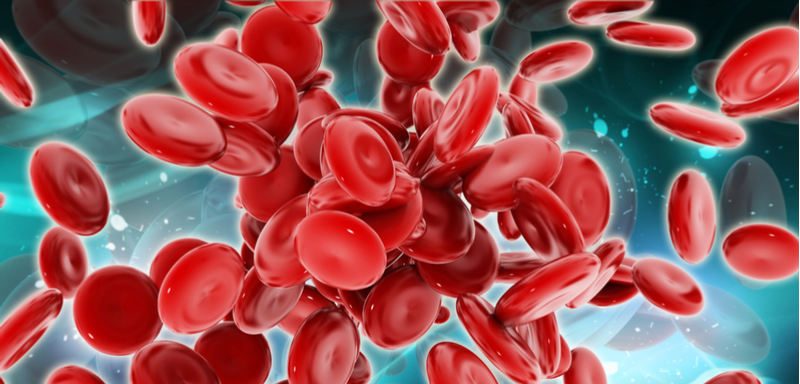Newsletter Signup - Under Article / In Page
"*" indicates required fields
From red blood cells to platelets, the cells in our own blood could prove an effective way of delivering drugs to their target and improving their safety.
Many pharmaceutical drugs in the market come with side effects that generally arise from their effects on parts of the body other than their intended target. Even when a drug is beneficial, strong side effects can lead to a patient skipping doses or abandoning the drug regimen completely.
Drug delivery systems are the holy grail of precision medicine, seeking to reduce these off-target effects. However, drug delivery systems such as synthetic nanocarriers or lipid nanoparticles continue to run into challenges regarding preventing unwanted immune responses to the carrier and implementing mechanisms to release the drug in a controlled way.
Recent work suggests that a better alternative lies in the most abundant cells in our bodies: blood cells. In particular, red blood cells and platelets show promise in this area. Unlike most of our cells, they do not carry genetic material, which makes them less likely to be attacked by the immune system.
Moreover, blood cells persist in the bloodstream for days to months, with red blood cells surviving for an average of four months. This means that they can continue to deliver drugs for a long period of time. Lastly, blood cells can be easily extracted from a donor and transfused into the patient after loading them with drugs.
Red blood cell drug delivery
Red blood cells, also known as erythrocytes, have been investigated as carriers for therapeutics since the 1970s when researchers first were able to encapsulate enzymes inside them. However, in the ‘80s and ‘90s, increased scrutiny regarding diseases transmitted through blood transfusions, such as AIDS, slowed down progress in the field. More recently, as interest in cell and gene therapies increases, biotech researchers and companies are developing methods to load a range of therapeutic entities inside red blood cells.
Italian biotech EryDel develops therapies that use patient’s own blood cells as a drug delivery system to treat rare diseases. Its lead candidate recently completed phase III trials for the treatment of the neurodegenerative condition ataxia telangiectasia. The drugs are loaded into the blood cells using the simple phenomenon of osmosis.
“Our technology requires a proprietary red cell loader and a single-use kit containing a centrifuge bowl, a closed system of tubing, and different solutions that provide osmotic step conditions to gently open the pore of the membrane of the erythrocytes,” Luca Benatti, CEO of EryDel, told me. After the drugs are loaded onto the red blood cells, another solution is used to reseal the cell’s membrane before infusing the cells into the patient.

Another company that is working on red blood cell therapeutics is the French biotech EryTech. While this company also uses osmotic solutions to load therapeutic cargo the focus of its drug development pipeline is on cancer. EryTech’s lead drug candidate is being tested in phase III trials for the treatment of advanced pancreatic cancer.
The goal of EryTech is to transform red blood cells into drug factories that deprive cancer cells of a vital nutrient called asparagine. The technology “encapsulates the asparaginase enzyme within red blood cells, which [naturally] have active pumps to bring the substrate, asparagine, inside,” Gil Beyen, CEO of EryTech, told me. “Once injected in the bloodstream, the red blood cells will circulate with a half-life of approximately three weeks and will act as a ‘circulating bioreactor’ that will lower asparagine levels over a prolonged duration.”
This approach of turning cells into drug factories is increasingly gaining traction, and EryDel is also working on it. “For the target indications we are pursuing, such as phenylketonuria or refractory gout, the loaded red blood cell works as a bioreactor where the substrate that enters the cell is degraded by the enzyme,” Benatti said.
Delivering drugs with red blood cells isn’t without limitations. First, the osmotic shock used to load drugs may irreversibly damage the cell membrane of some of the cells. Secondly, the drugs may diffuse out of the cells before they reach the target, causing side effects. A number of novel approaches address these concerns but are yet to be clinically validated. These include loading drugs on the surface to avoid damaging the cells, and coating synthetic nanocarriers with red blood cell fragments to evade the immune system.
Platelet drug carriers
With a lifespan averaging 10 days, platelets do not circulate in the blood as long as erythrocytes. However, they have a high capacity for storage and can carry a wide range of cargo. In the human body, platelets patrol the vascular system to detect and fix leaking vessels, which makes them ideal to target and release their contents at injury sites.
“[Platelets] have natural homing for some types of tissues, as well as for cancers, wounds, and pathogens. With platelets, we can reduce the off-target effects of cell-based therapeutics,” said Marco Malvestiti, CEO of Plasfer, an Italian preclinical startup engineers platelets to carry drugs.
As cells that seek these sites, “platelets have a huge natural advantage versus other types of cells that can be used as a vehicle for therapeutic agents,” said Rosario Billetta, Plasfer’s COO. Beyond wounds and cancers, the technology can also be applied to regenerative medicine and cardiovascular disease.
Like red blood cells, using platelets to deliver drugs can avoid safety issues such as the immune system attacking the carrier. In addition, Billetta told me that platelets can also be delivered in smaller forms to resemble synthetic nanoparticles.
Plasfer’s technology can be used to either encapsulate drugs inside the platelets or load them on the cell’s surface. The choice depends on the particular therapeutic application. “When we want to use platelets as antigen-presenting cells, we are working on the outside. When we want to use platelets for drug delivery, we engineer them inside,” Malvestiti told me.
There are two potential concerns about using platelets for drug delivery. Firstly, due to platelets’ role in the formation of blood clots, there is a risk of them causing excessive clotting or further worsening the disease they are meant to treat, for example in the case of patients with certain forms of blood cancer. Secondly, loading them with drugs may shorten the life of platelets.
Drug delivery systems using platelets are lagging behind red blood cells, with the furthest among them still in preclinical development. However, they are fast catching up thanks to the work of companies such as Plasfer, PlateletBio, and Cellphire Therapeutics among others.
Other blood cells and inspired carriers
Leukocytes or white blood cells are also emerging candidates for drug delivery. They have adhesive properties and stick to the thin inner lining of blood vessels. They also possess an inherent homing ability to cancers and inflamed sites that makes drug delivery even more precise. However, commercial viability remains a distant goal since there is a lot of variability between batches when extracting white blood cells. As an alternative, researchers are coating nanocarriers with components derived from leukocytes.
Among white blood cell types, neutrophils and monocytes in particular see a lot of utility in drug delivery. As the first responders of the immune system, neutrophils are the earliest cells to reach the site of inflammation. Earlier this year, a Chinese research team demonstrated a drug delivery platform that uses both neutrophils and monocytes to target the tumor microenvironment. But for all their promise, a potential risk of using leukocytes for drug delivery is that they might further aggravate inflammation by sending the immune system into hyperdrive.
Regardless of the blood cell type, their use as drug carriers remains limited to small-scale use cases when using the patient’s own blood cells. As with other forms of cell therapy, there are some major challenges to the commercialization of therapies based on blood cells, including scaling up production and long-term storage. In the future, using off-the-shelf treatments using cells from donors may address some of these problems.






